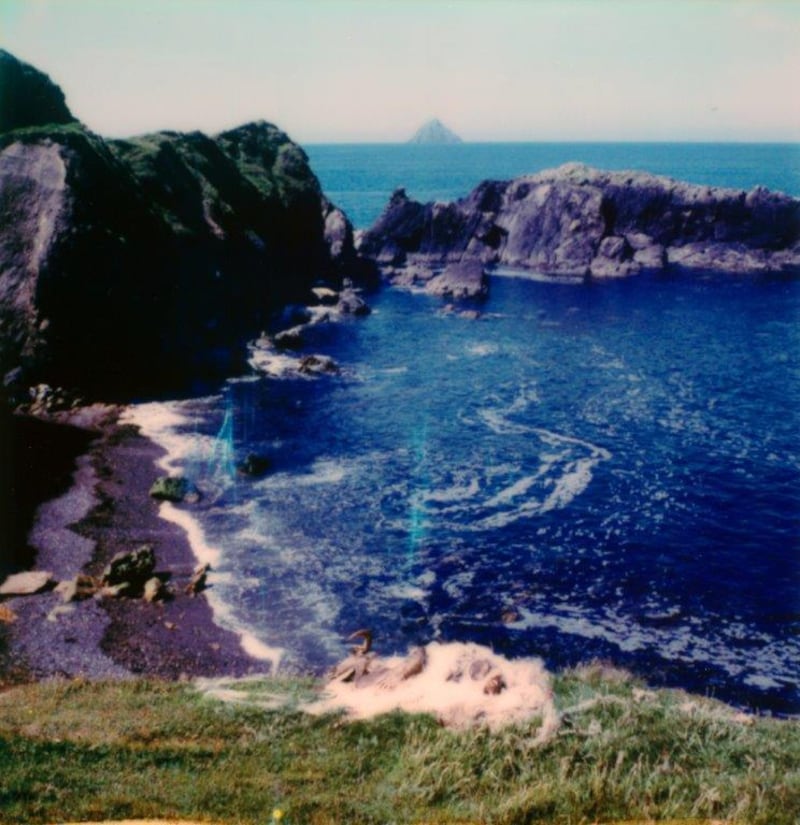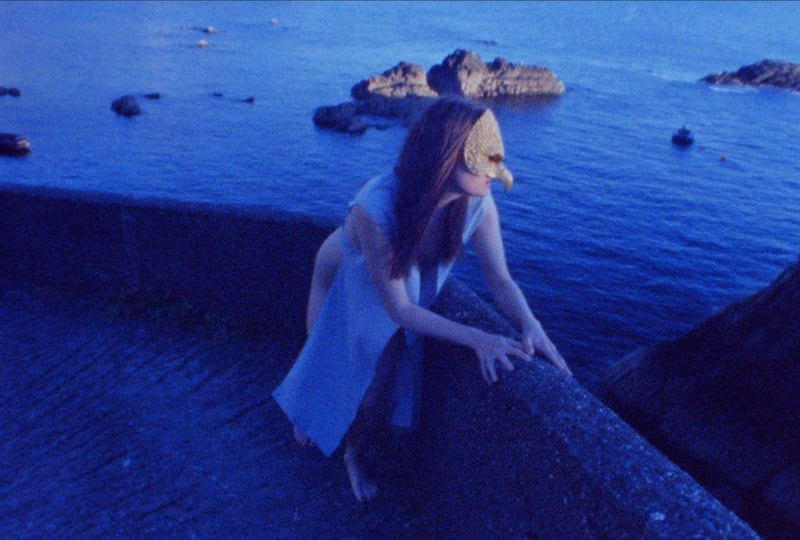The heart of Atoosa Pour Hosseini's exhibition Kinetics in Blue is a short, dreamy, lyrically intense film, screened in the first-floor gallery space at the LAB.
The installation downstairs is not so much a separate but an ancillary work, a form of documentation of the film process that includes a series of Polaroids taken during the shoot and short loops of some of the footage. The setting, unnamed in the film, is the Blasket Islands, during the summer just past.
That was a fortunate chance: the sun-drenched island in the glorious blue sea is probably more Mediterranean than Atlantic in appearance, which ideally suits the mythic dimension of Pour Hosseini’s film.
She is a co-director of the Experimental Film Society, founded in Iran in 2000 by Rouzbeh Rashidi and based in Ireland since 2004. The society has been involved in the production of hundreds of short films and, perhaps more surprising, dozens of feature-length films. Its pace of development has been such that last year it became a limited company, the better to facilitate productions.
A notable example of an EFS feature-length film is Inside, a 2017 collaborative work by Vicky Langan and Maximilian Le Cain. While that film defies categorisation, it is at the same time readily accessible and often, for long sequences, hypnotically watchable, offering a genuine alternative to conventional narrative and visual structures.

Choosing a spot
Pour Hosseini notes that she likes the materiality of film, that it is tangible and analogue. She grew up in Iran and studied painting there – traditional, representational painting in a conservative vein – before moving to Ireland in 2006.
While she and her husband, uncomfortable with the difficulties faced by artists in Iran, wanted to try living abroad, Dublin was not, perhaps, an obvious choice of destination. In fact she remarks that she and her husband have friends and family in London and Brighton, but somehow decided to have a look at Dublin. The quality of life, and the number of interesting, open and sympathetic people they soon met persuaded them to stay on.
Looking towards an MFA at NCAD she wanted to move on from what she had been doing, seeing herself as a painter who was not happy with the constraints of the medium as she had learned them.
Initially she made stop-frame animation films and then gravitated towards the possibilities of experimental film.
She set off for the Blaskets with two 16mm cameras, a Polaroid camera, a performer . . . and some props and a costume
Film opened up time, movement, sound and more. She feels her approach to what she does is painterly – and she does, for example, paint directly onto film – but in a greatly expanded way.
A couple of years ago she worked on a collaborative film-plus-performance project with Suzanne Walsh, Refining the Senses. Found Super-8 family footage was the basis of the film, together with freshly shot material in which Pour Hosseini imagined other aspects of the family members' lives.
She cut and scrubbed the found footage and, she says, found that the last remaining layer of scrubbed film is blue.
The title Kinetics in Blue stems from that project. She also cites Ben Street's exposition on blue as "the colour of longing" in his book A History of Art in Four Colours, and Derek Jarman's film Blue, and his assertion that "Blue is more than colour . . . It is a state of being."
Collaborative planning
Pour Hosseini’s approach is collaborative and process driven. She begins with a plan, but rather than simply realising that plan, she introduces it to her collaborators and the environment, sees what emerges from the encounter and takes it from there.
She set off for the Blaskets with two 16mm cameras, a Polaroid camera, a performer – artist Katie O’Neill – and some props and a costume. Another collaborator, sound artist, Karen Power, began work a little later and is responsible for the atmospheric soundtrack.
Pour Hosseini’s protagonist, a wary, restless hybrid creature wearing a bird of prey face mask and the tattered remnants of a gown, seems to find herself suddenly grounded in the rocky, elemental island terrain.

There are elements of one-time habitation and, perhaps ominously, the carcass of a goat by a cliff edge. Pour Hosseini layers and interweaves her imagery so that the central premise deepens, but doesn't follow a predictable narrative arc. What might a potential arc be? In a text on the work, Daniel Fitzpatrick discerns its links to British "folk horror" cinema, as in The Wicker Man or Witchfinder General.
Certainly the bird-woman, elegantly embodied by O’Neill in a committed, hugely energetic performance incorporating dance, gesture and stillness, is a displaced spirit.
She could be taken, at times, for a sacrificial victim, a vulnerable being in an ancient setting, innocently unaware of its codes and meanings, moving haplessly towards her fate. Possibly, but not at all necessarily so.
She is cast up on a strange shore, and Pour Hosseini mentions the migrant experience. Rather than being sacrificed to the land, though, the protagonist seems to embrace it, relishing the fabric of the landscape, the airy expanse of the sky and the clear clean water, exulting in a sense of her own freedom.
Power’s soundtrack is appropriately layered and complex, with intimations of distance and incommunicativeness, and it builds to an urgent, unsettling crescendo.
At the heart of the film, even given its darker, unsettling notes, is an immense optimism, a glimpse of harmony in a troubled world.












